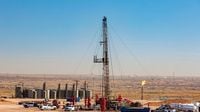ConocoPhillips, one of the world’s largest independent oil producers, has announced sweeping layoffs that will see up to a quarter of its global workforce cut by the end of 2025. The move, revealed in early September, is part of a broader cost-cutting and restructuring initiative the company has dubbed “Competitive Edge.” It’s a bold—some might say necessary—step for a company facing rising costs, volatile oil prices, and seismic shifts across the energy sector.
The news dropped on September 4, 2025, with CEO Ryan Lance addressing employees in a video message, as reported by Reuters. In the message, Lance said frankly, “As we streamline our organization and take work out of the system, we will need fewer roles.” The numbers are stark: out of approximately 13,000 employees worldwide, between 2,600 and 3,250 jobs will be eliminated, representing 20-25% of ConocoPhillips’ workforce. The layoffs are permanent, with most reductions expected to occur before the year’s end. Impacted employees have been promised 60 days’ advance notice, severance, and outplacement assistance, according to company spokesperson Dennis Nuss.
For those inside the company, the news came during a town hall meeting at the Houston office at 9 a.m. Central Time, with Lance fielding questions and outlining the rationale behind the cuts. The company said it has not yet determined which individuals will be let go, but the process is expected to begin as early as November 10, 2025, with employment end dates anticipated to start the week of December 1, 2025.
ConocoPhillips isn’t alone in making such difficult decisions. The oil and gas industry has seen a wave of layoffs over the past year as companies grapple with falling prices and rising costs. Chevron announced in February 2025 that it would cut 15-20% of its workforce, and Shell laid off 20% of its employees in 2024. The industry-wide trend is clear: companies are consolidating, streamlining, and doing more with less.
So what’s driving this contraction? According to Straight Arrow News, energy economist Ed Hirs of the University of Houston points squarely to low oil prices as the main culprit. “The low oil price is first and foremost the primary driver [of layoffs],” Hirs said. Oil prices have largely remained under $70 a barrel throughout 2025, with only brief, unsustained spikes. In fact, the Federal Reserve Bank of Dallas found that prices around $60 are too low to spur new drilling, and a whopping 71% of large oil producers told the Dallas Fed they would decrease production at that level.
The impact is visible in the rig count. The number of active oil and gas rigs in the U.S. has plummeted from 780 in December 2022 to just 536 by August 2025, a drop of 47 rigs from the previous year, based on BakerHughes data. As drilling slows, job cuts follow. Add to that the pinch from tariffs on steel and aluminum—essential for drilling equipment—and it’s no wonder ConocoPhillips faces a $2-per-barrel cost disadvantage compared to competitors. Skip York, a nonresident fellow at Rice University’s Baker Institute, explained that ConocoPhillips’ higher U.S. rig presence makes it more sensitive to these tariffs than peers like Chevron or ExxonMobil, who operate more internationally.
But market forces aren’t the only reason for the restructuring. ConocoPhillips’ $22.5 billion all-stock acquisition of Marathon Oil in November 2024 has also played a role. The deal is expected to generate $1 billion in annualized “synergies,” much of it through cost-cutting and eliminating redundant positions. “Every contraction brings consolidation,” Hirs told Straight Arrow News, noting that merged companies don’t need duplicate teams of accountants, lawyers, or geologists. York estimated that about 60% of these synergies typically come from staffing reductions, and geographic consolidation after mergers can also lead to job cuts in the field.
The company’s cost-cutting is aggressive. Production costs have climbed from $11 per barrel in 2021 to $13 in 2024, and ConocoPhillips is targeting $2 billion in annual savings. The “Competitive Edge” initiative includes a 30% reduction in rigs and frac crews, all while aiming to maintain production levels. In Q2 2025, despite a 19% drop in realized oil prices to $45.77 per barrel of oil equivalent, ConocoPhillips still generated $4.7 billion in cash from operations, according to AINVEST. That’s no small feat.
For shareholders, the company has been generous. In Q2 2025, ConocoPhillips returned 45% of its cash flow via dividends and buybacks. It also plans $5 billion in asset sales by 2026, including a $1.3 billion sale of Anadarko Basin assets, with proceeds funneled into high-margin projects like LNG and hydrogen. The Alaska Willow LNG terminal is one such project, positioning ConocoPhillips as a potential bridge-fuel supplier in the global energy transition.
Still, the company’s future hinges on a delicate balance. While asset sales and cost discipline boost short-term liquidity, they may also limit long-term growth potential. The company’s intrinsic value is pegged at $119.70 per share as of August 2025, about 20% above its current price, but that optimism depends on hitting a $7 billion free cash flow target by 2029—something that’s only likely if oil prices stabilize around $70 per barrel. With OPEC+ countries increasing production and global supply rising, that’s far from certain. York summed up the industry’s mood: “There’s this growing consensus that we may be seeing the end of production growth in the U.S.”
ConocoPhillips’ pivot toward LNG and hydrogen is a bet on the energy transition, but oil and gas remain its core business. The company is targeting a 35-45% emissions reduction by 2030, but analysts warn that workforce cuts could stifle the innovation needed to meet those goals. Dan Pickering of Pickering Energy Partners cautioned that “doing more with less” might backfire if it comes at the expense of research and development. With a leaner workforce—about 13,000 employees even before the cuts—there’s a real risk of losing the talent needed to drive future low-carbon technologies.
Investors have reacted with caution. Shares of ConocoPhillips fell 4.3% on September 3, 2025, to under $95, and are down nearly 14% over the past year. Despite beating Wall Street’s expectations with second-quarter earnings of $1.97 billion, those results were still down from $2.33 billion the year before. The company holds a solid $5.7 billion in cash and short-term investments, providing a buffer against ongoing volatility, but the market remains skeptical. Year-to-date, ConocoPhillips’ stock has declined 4.7% as of early September 2025.
Looking ahead, the company’s success will depend on how well it integrates Marathon Oil, delivers on promised synergies, and navigates a market where oil prices are stuck in the doldrums. Historically, ConocoPhillips’ stock has shown strong short-term momentum after earnings releases—its 3-day, 10-day, and 30-day win rates from 2022 to 2025 all hover around 77-85%—but long-term gains have been modest.
In a sector buffeted by global forces, technological change, and the push for decarbonization, ConocoPhillips’ gamble on efficiency and capital discipline could pay off—or leave the company exposed if conditions worsen. The next 12 to 18 months will be telling as the company seeks to turn its “Competitive Edge” into a lasting advantage.






